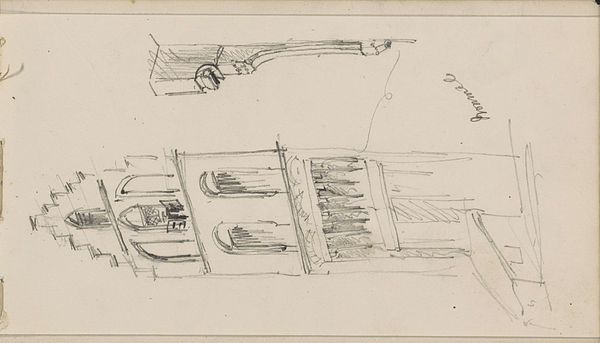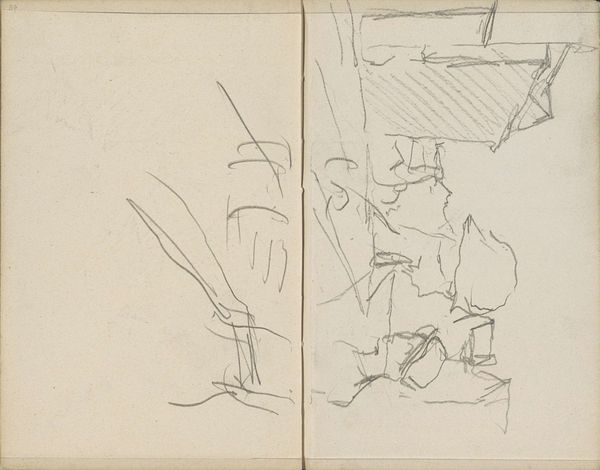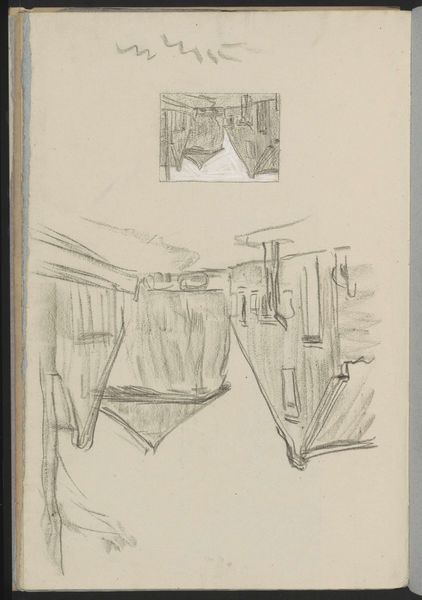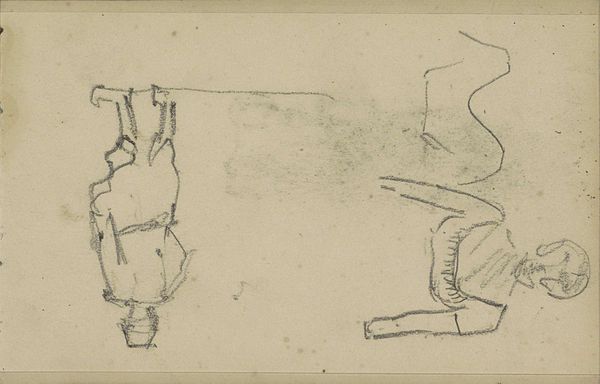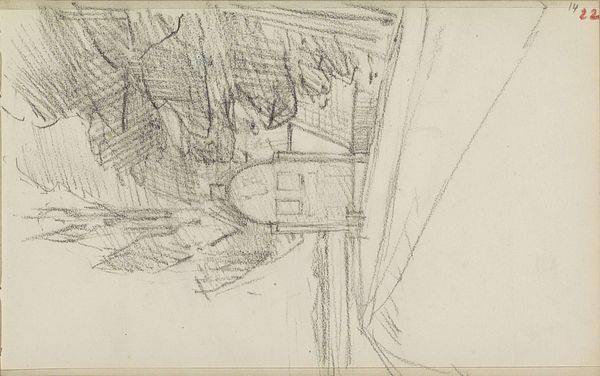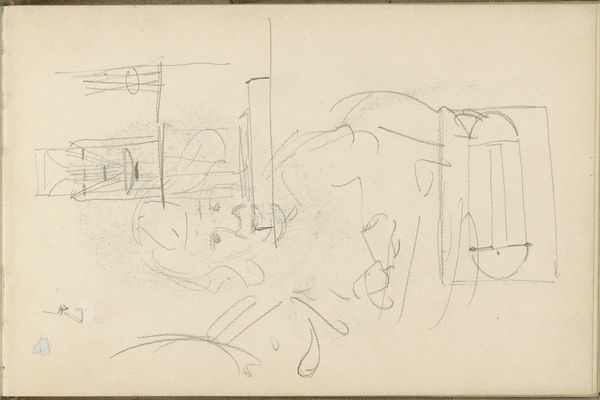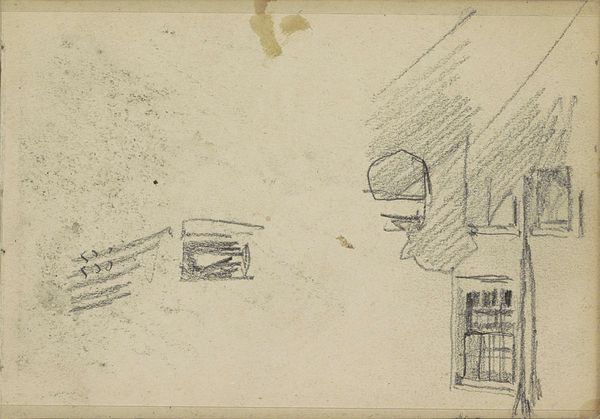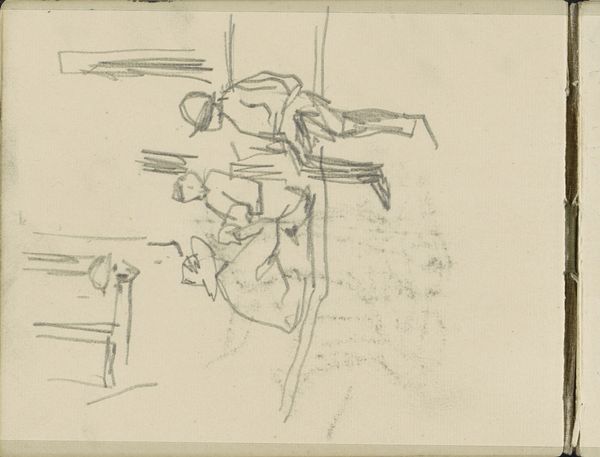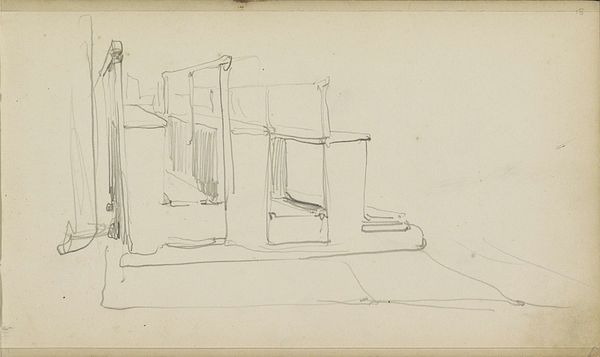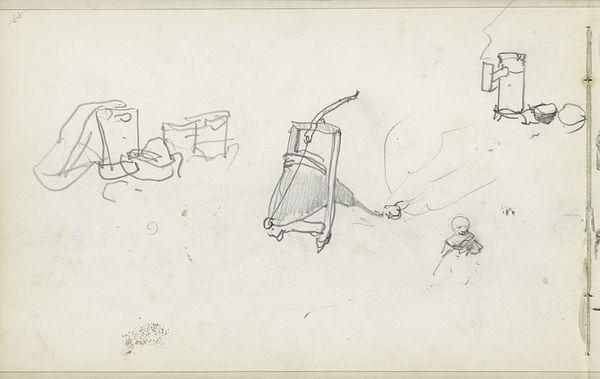
drawing, pencil
#
drawing
#
quirky sketch
#
landscape
#
personal sketchbook
#
idea generation sketch
#
sketchwork
#
ink drawing experimentation
#
pen-ink sketch
#
pencil
#
sketchbook drawing
#
storyboard and sketchbook work
#
sketchbook art
#
realism
#
initial sketch
Copyright: Rijks Museum: Open Domain
Curator: It feels… spontaneous, like a fleeting thought captured on paper. It’s honest in a way only a quick sketch can be. Editor: Exactly. We're looking at "Man by a Well in Brotterode in Thüringen," a drawing done around 1840 by Johannes Tavenraat, currently held here at the Rijksmuseum. You're picking up on its immediacy. It's all pencil and ink, lines dashed off, really. Curator: Those dashed lines… they almost vibrate with energy. You get a sense of the artist just quickly blocking in shapes, trying to seize a memory of the moment, that’s something raw right? Editor: It’s interesting that you say “memory.” Sketches like this, quick impressions of life and the land, were crucial to the development of landscape painting in the 19th century. Artists needed to know their world intimately if they were going to claim it as territory, either literally, culturally, or artistically. Brotterode was then part of Prussian Saxony, a region that experienced industrial change during the 1830-40s when Tavenraat was there. Curator: Knowing it's part of that lineage casts a different light, doesn't it? What I love is this interplay of function and symbolism. It shows a humble, maybe weary man stopping at the well. A source of literal and maybe even spiritual nourishment, like some scene that could inspire poetry! Editor: And also one imagines that access to clean and reliable water would have had significant cultural and material weight. Brotterode was a center of mining going back to the Middle Ages. Wells would not have just been poetic, but intensely practical locations and a reminder of labor conditions. This is something to keep in mind, as it's now easy to romanticize nature scenes or quaint villages, and often forget their connection to environmental change and modes of economic and material extraction. Curator: That adds such a crucial layer. It's not just a pretty picture, but a record and document of its time. Maybe that raw honesty I first felt came from confronting the realities of the region in the moment, which Tavenraat so beautifully communicates. Editor: Precisely, this artwork offers us so much to consider from environment, industrialization, labor, to simply the intimacy and observation between one man and water source!
Comments
No comments
Be the first to comment and join the conversation on the ultimate creative platform.
